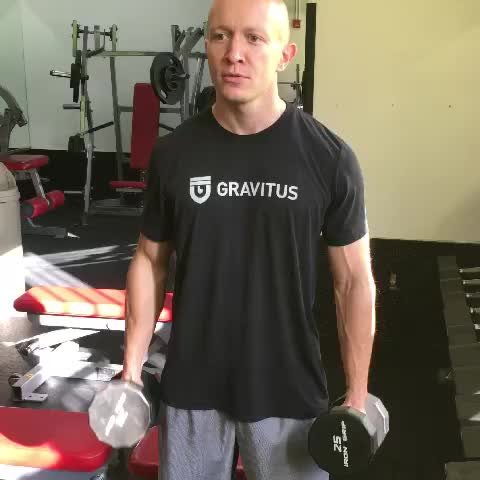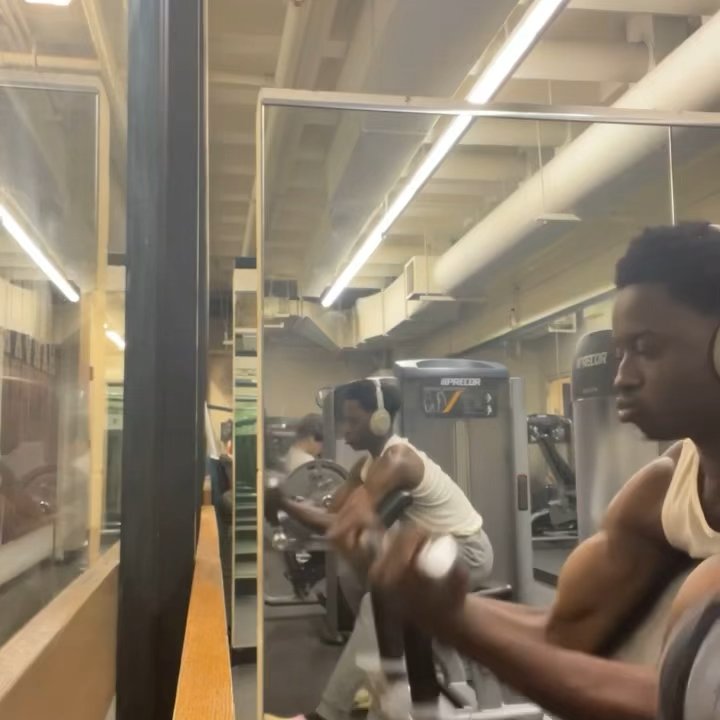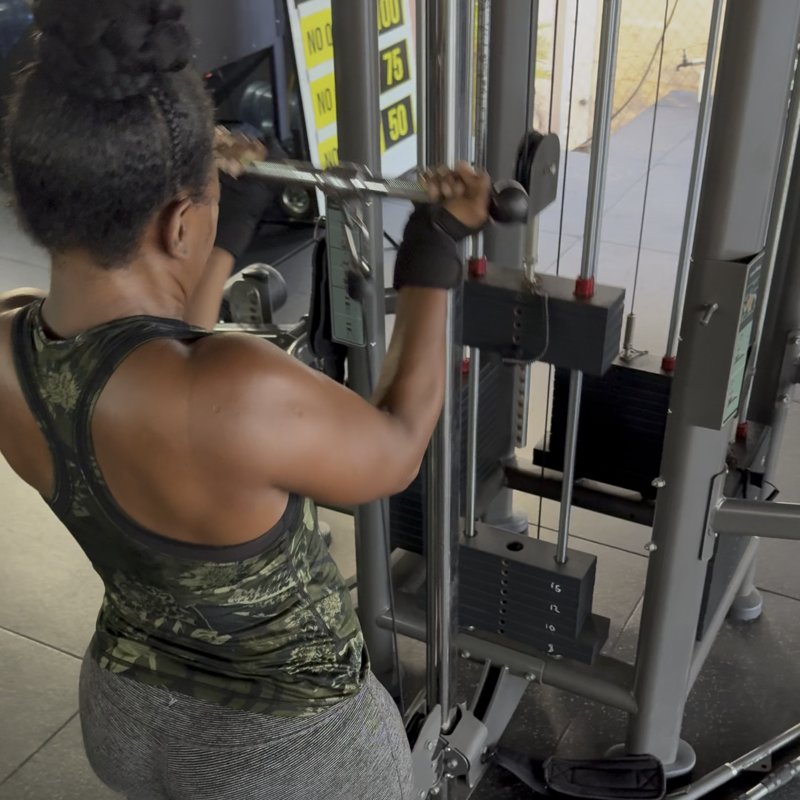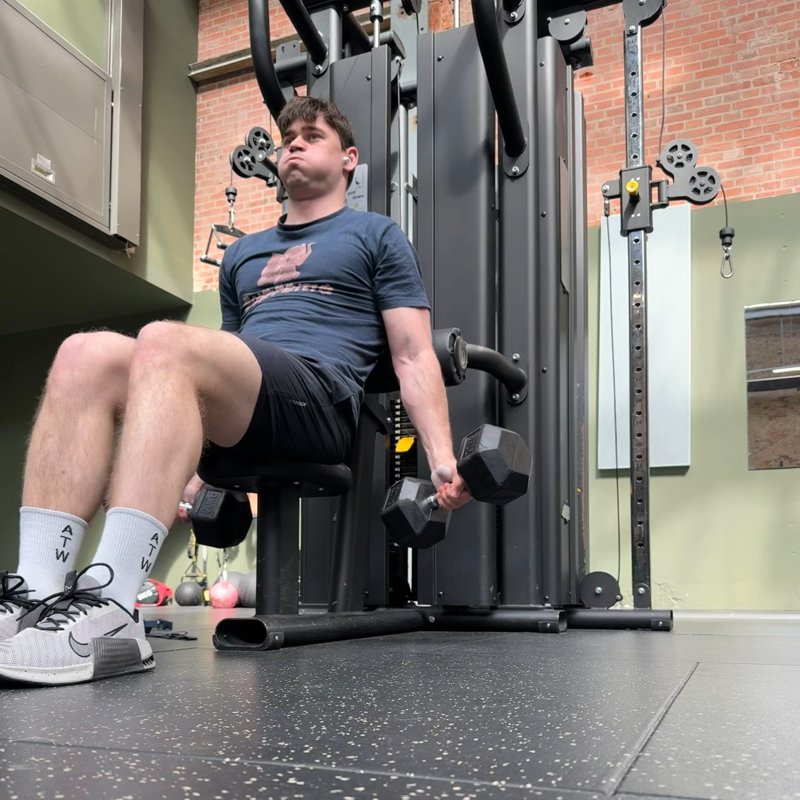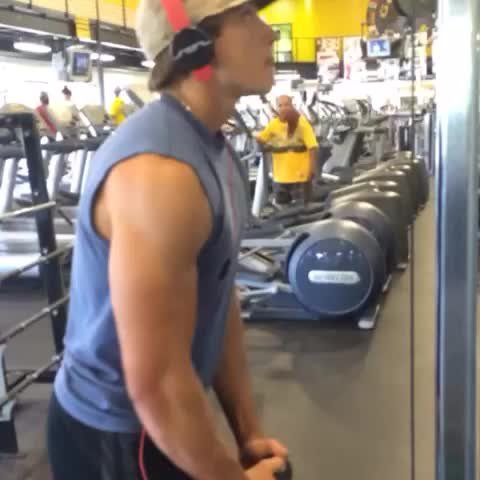Incline Dumbbell Curl: The Ultimate Guide
The incline dumbbell curl is an effective variation that emphasizes the biceps, particularly the long head. This guide covers proper technique, common mistakes, and programming strategies for maximizing bicep development and creating a more impressive peak.

Quick Facts
Key Benefit
Emphasizes the long head of the biceps for improved peak development and overall arm aesthetics
Primary Muscles
Biceps
Secondary Muscles
Anterior Deltoids, Brachialis, Forearms
Equipment
Dumbbells, Incline Bench
Difficulty
Intermediate
Type
Isolation, Hypertrophy
In This Guide
Ready to master the Incline Dumbbell Curl?
Track your progress, see improvements over time, and build strength consistently.
Download GravitusThe Incline Dumbbell Curl is a specialized biceps exercise designed to emphasize the long head of the biceps brachii muscle. By positioning the body on an inclined bench, this variation places the biceps in a stretched position at the start of each repetition, creating a unique stimulus for growth and development, particularly for the long head that contributes significantly to the coveted bicep peak. The biceps brachii muscle has two heads—the long (outer) head and the short (inner) head. The long head originates at the supraglenoid tubercle of the scapula, crossing the shoulder joint before joining the short head to insert at the radial tuberosity of the forearm. Because the long head crosses both the shoulder and elbow joints, it's affected by shoulder position. The inclined position places the shoulder in extension, which stretches the long head more than standard curls performed with the arm vertical. This increased stretch at the bottom of the movement, combined with a full contraction at the top, provides an excellent stimulus for growth. The incline position also naturally restricts body English and momentum, forcing stricter form and greater biceps isolation than standing variations. Whether you're looking to build a more impressive bicep peak, break through a plateau in arm development, or simply add variety to your training program, the incline dumbbell curl is an excellent addition to your exercise arsenal. This comprehensive guide covers proper technique, common mistakes to avoid, effective variations, and programming strategies to help you maximize your results with this specialized biceps exercise.
Why the Incline Dumbbell Curl Is Worth Mastering
The incline dumbbell curl offers several unique advantages that make it a valuable addition to your arm training program:
Long Head Emphasis
Specifically targets the long head of the biceps due to the stretched position created by the incline, contributing to better bicep peak development.
Increased Range of Motion
Provides a greater stretch at the bottom of the movement compared to standard curls, potentially stimulating more muscle fibers and growth.
Strict Form Enforcement
The incline position naturally restricts body movement and momentum, forcing greater isolation and tension on the biceps throughout the exercise.
Proper Incline Dumbbell Curl Form: Step-by-Step
Setup
- Set an incline bench to approximately 45-60 degrees (steeper angle for greater stretch, less steep for more comfort).
- Select an appropriate weight that allows for controlled movement with proper form.
- Sit back on the bench with your back and head supported against the pad, feet firmly planted on the floor.
- Hold a dumbbell in each hand with arms extended downward, hanging naturally along the sides of the bench.
- Start with a neutral grip (palms facing each other) or a slightly supinated grip (palms angled slightly forward).
- Maintain good posture with chest up and shoulders back and down.
The Movement
- Keeping your upper arms stationary against the bench, exhale as you curl the weights upward by flexing at the elbow.
- As you curl, gradually rotate your wrists so that the palms face upward (supination) by the time you reach the halfway point.
- Continue curling until the dumbbells reach shoulder level, with biceps fully contracted.
- At the top position, focus on squeezing your biceps for a brief moment to maximize contraction.
- Inhale as you slowly lower the weights back to the starting position, controlling the descent and gradually rotating the wrists back toward the starting position.
- Allow your arms to fully extend at the bottom to experience the complete stretch in the long head of the biceps.
- Repeat for the desired number of repetitions, maintaining strict form throughout the set.
Key Form Tips
Arm Position
Keep upper arms perpendicular to the floor throughout the movement; don't let them drift forward or backward.
Full Extension
Allow complete extension at the bottom of each rep to maximize the stretch on the long head of the biceps.
Controlled Descent
Lower the weight slowly (2-3 seconds) to increase time under tension and enhance the growth stimulus.
Avoid Momentum
Resist the urge to swing or use body movement to assist the curl; the incline position should help enforce strict form.
Wrist Position
Maintain straight wrists throughout the movement, avoiding excessive flexion or extension.
Mental Connection
Focus on feeling the biceps working throughout the entire movement, particularly at the extreme stretched position.
Muscles Worked in the Incline Dumbbell Curl
Primary Muscles
- biceps: The biceps brachii muscle, with emphasis on the long head (outer portion) that creates the peak when well-developed due to the stretched position created by the incline angle, while the short head (inner portion) is also engaged during the curl though to a lesser degree than in standard variations.
Secondary Muscles
- brachialis: Located beneath the biceps brachii, this muscle contributes to elbow flexion and is engaged particularly in the early to mid-range of the curl.
- brachioradialis: A muscle of the forearm that assists with elbow flexion, especially in the neutral grip position at the beginning of the curl.
- forearms: The various muscles of the anterior forearm that flex the wrist and fingers are engaged as stabilizers during the exercise.
- anterior deltoids: The front shoulder muscle provides minimal assistance during the initial phase of the curl if strict form is not maintained.
Common Mistakes and How to Avoid Them
Insufficient bench angle
Using a bench angle that's too flat reduces the unique benefits of this exercise variation. Set the bench to at least 45 degrees to ensure proper shoulder extension and maximize the stretch on the long head of the biceps. If you're unsure, err on the side of a steeper angle rather than too flat.
Raising upper arms off the bench
Allowing the upper arms to come off the bench during the curl turns this into a less effective exercise and reduces the focus on the long head. Keep your upper arms in contact with the bench throughout the entire movement, creating a fixed pivot point for the curling motion.
Using momentum or body swing
While the incline position naturally restricts momentum, some lifters still attempt to use body movement to assist the curl. Keep your torso firmly against the bench and focus on moving only at the elbow joint. If you can't curl the weight without assistance, it's too heavy.
Incomplete range of motion
Not lowering the weights fully or not curling them high enough reduces the effectiveness of the exercise. Use a complete range of motion from full extension (to maximize the stretch) to complete flexion (for maximum contraction). The extended range of motion is one of the key benefits of this variation.
Incline Dumbbell Curl Variations
Angle Variations
-
Low Incline Dumbbell Curl
Using a shallower incline angle (30-40 degrees) reduces the stretch somewhat but may be more comfortable for those with shoulder mobility limitations.
-
High Incline Dumbbell Curl
Setting the bench to a steeper angle (60-75 degrees) increases the stretch on the long head of the biceps but may reduce the weight you can handle.
-
Prone Incline Curl
Lying face-down on an incline bench creates a unique angle that places tension on the biceps throughout the entire range of motion.
Execution Variations
-
Alternating Incline Dumbbell Curl
Curling one arm at a time allows for greater focus on each side individually and may enable slightly better form and mind-muscle connection.
-

Offset-Grip Incline Curl
Holding the dumbbell with the weight slightly shifted toward the pinky side creates rotational tension that may enhance biceps activation.
-

Cross-Body Incline Curl
Curling the weight across the body toward the opposite shoulder adds a rotational component that can enhance biceps engagement and create a unique stimulus.
FAQs About the Incline Dumbbell Curl
The primary difference is in the starting arm position and its effect on the biceps. In standard curls, your arms hang vertically, creating a relatively neutral position for the biceps. In incline curls, the backward-angled torso positions your arms behind your body, placing the biceps (particularly the long head) in a greater stretched position at the start of each repetition. This increased stretch enhances the activation of the long head, which contributes to the bicep peak. Additionally, the incline position naturally restricts momentum and body English, enforcing stricter form and potentially greater isolation. For most lifters, the incline variation allows less weight to be used but may provide greater tension through the range of motion.
While there's no single "perfect" angle that works best for everyone, most experienced lifters find that a bench angle between 45-60 degrees provides the optimal balance of stretch, activation, and comfort. A steeper angle (closer to 60 degrees) creates more stretch on the long head of the biceps but may be less comfortable for some. A shallower angle (closer to 30-45 degrees) may be more comfortable and allow for slightly heavier weights but provides somewhat less stretch. The best approach is to experiment within this range to find what feels most effective for your individual biomechanics and goals. Consider occasionally varying the angle to provide different stimuli to the biceps over time.
For optimal biceps development, including both incline and standard (flat) curls in your training program is beneficial. These variations emphasize different aspects of the biceps—incline curls target the long head more effectively, while standard curls may better activate the short head and provide a different stimulus. You can incorporate both within the same workout (typically starting with incline curls when fresh) or alternate them between different workouts throughout your training cycle. The specific approach depends on your training frequency, recovery capacity, and individual goals. For most lifters, 2-3 different curl variations per week, changed periodically, provides an excellent stimulus for balanced biceps development.
Video Demonstrations
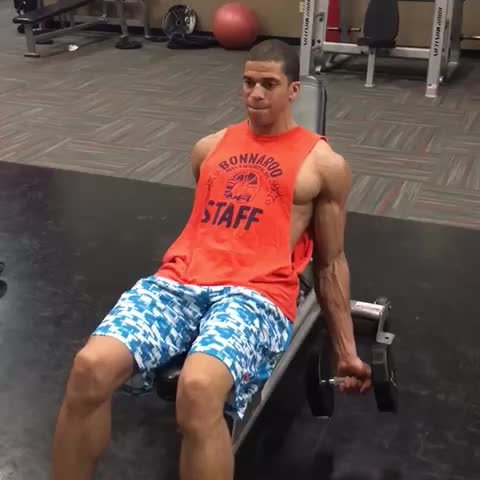
Log in to watch video demonstrations
Login to Watch3 video demonstrations available
Find more video demonstrations in the Gravitus app
Tips from the Community
-

suppination, you want to form a bowl with your hands
-

Flight pronation as you lower, while maintaining supinated forearm
-

45 degrees bench angle is my favorite, as i feel it targets the biceps better than a higher angle, while lower angles feel awkward
Track your progress with Gravitus
Download Gravitus to log your workouts, track your progress, and join a community of fitness enthusiasts.

Helpful Resources
One Rep Max Calculator
Find your one rep max for any exercise without maximal testing. Essential for developing effective strength training programs.
Calculate 1RMWorkout Programs
Follow structured workout programs created by fitness professionals to maximize your strength and muscle gains.
View Programs